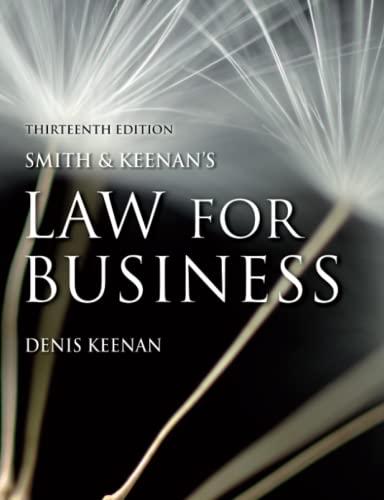Answered step by step
Verified Expert Solution
Question
1 Approved Answer
Match each of the ten (10) types of judicial self-restraint to their definition. Question 21 options: A Plea Must Be Specific Appellate Courts Rule on
Match each of the ten (10) types of judicial self-restraint to their definition. Question 21 options: A Plea Must Be Specific Appellate Courts Rule on Legal Not Factual Questions Courts Do Not Decide "Political Questions" Laws Are Overturned on the Narrowest Grounds Only No Rulings Are Made on the "Wisdom" of Legislation Beneficiaries May Not Sue The Supreme Court Is Not Bound (Technically) by Precedents The Burden of Proof Is on the Petitioner Other Remedies Must Be Exhausted A Definite Controversy Must Exist 1. is defined as the restraint where federal courts do not render advisory opinions; parties to the suit must have proper standing, and courts ordinarily will not hear a case that has become moot. 2. is defined as a constraint upon the federal judiciary in that judges will hear no case on the merits unless the petitioner is first able to cite a specific part of the Constitution as the basis of the plea. 3. is defined as the constraint that a petitioner who has been the beneficiary of a law or an official action may not subsequently challenge that law. 4. is defined as a constraint upon appellate courts; as they will generally not hear cases if the grounds for appeal are that the trial judge or jury wrongly amassed and identified the basic factual elements of the case. 5. is defined as the High Court's ability to allow itself the freedom to overrule a past decision or to ignore a precedent that would seem to be controlling. 6. means th
Step by Step Solution
There are 3 Steps involved in it
Step: 1

Get Instant Access to Expert-Tailored Solutions
See step-by-step solutions with expert insights and AI powered tools for academic success
Step: 2

Step: 3

Ace Your Homework with AI
Get the answers you need in no time with our AI-driven, step-by-step assistance
Get Started


